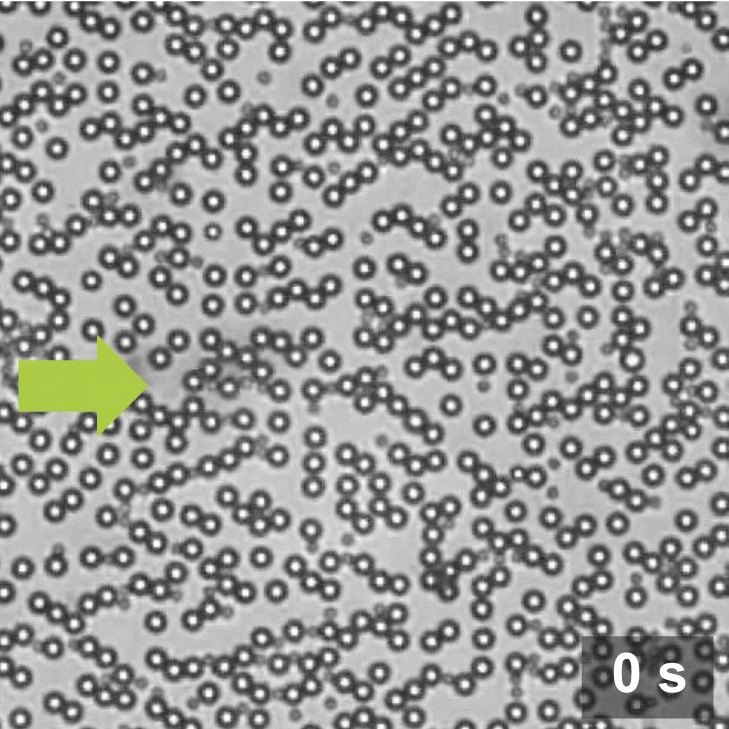EPJ E Highlight - Travelling wave drives magnetic particles
- Details
- Published on 18 May 2016

New method for selectively controlling the motion of multiple sized microspheres suspended in water
As our technology downsizes, scientists often operate in microscopic-scale jungles, where modern-day explorers develop new methods for transporting microscopic objects of different sizes across non uniform environments, without losing them. Now, Pietro Tierno and Arthur Straube from the University of Barcelona, Spain, have developed a new method for selectively controlling, via a change in magnetic field, the aggregation or disaggregation of magnetically interacting particles of two distinct sizes in suspension in a liquid. Previous studies only focused on one particle size. These results, just published in EPJ E, show that it is possible to build long chains of large particles suspended in a liquid, forming channels that drive the small particles to move along. This could be helpful, for example, when sorting magnetic beads by size, separating biological or chemical entities in lab-on-a-chip devices or transporting biological species to analyse them.
Using a magnetic field to control the transport of microscopic bodies is particularly attractive. This is because the properties of both the fluid and the object remain unaffected, unlike when optical tweezers or electric field micro manipulation are used. They rely on a magnetic film made of ferrite garnet - a material initially developed in the 1980s for magnetic data storage devices - which generates a strong, non-uniform magnetic field above its surface.
By studying particles of two distinct sizes, the authors found that, depending on their elevation above the surface of the magnetic substrate, the particles are subjected to different magnetic forces, resulting in different levels of mobility. This phenomenon stems from a change in the balance of magnetic forces imposed on the particles and their individual coupling with the travelling landscape. Therefore, by changing the external field the authors were able to selectively control the aggregation or disaggregation depending on the particle size.
Additional simulations confirm the validity of their hypothesis, as they are in good agreement with the experiments.
This article is part of the EPJE Topical Collection ”Nonequilibrium Collective Dynamics in Condensed and Biological Matter” edited by Holger Stark, Markus Baer, Carsten Beta, Sabine Klapp and Andreas Knorr.
Transport and selective chaining of bidisperse particles in a travelling wave potential. P. Tierno and A. V. Straube (2016), Eur. Phys. J. E 39: 54, DOI 10.1140/epje/i2016-16054-1




